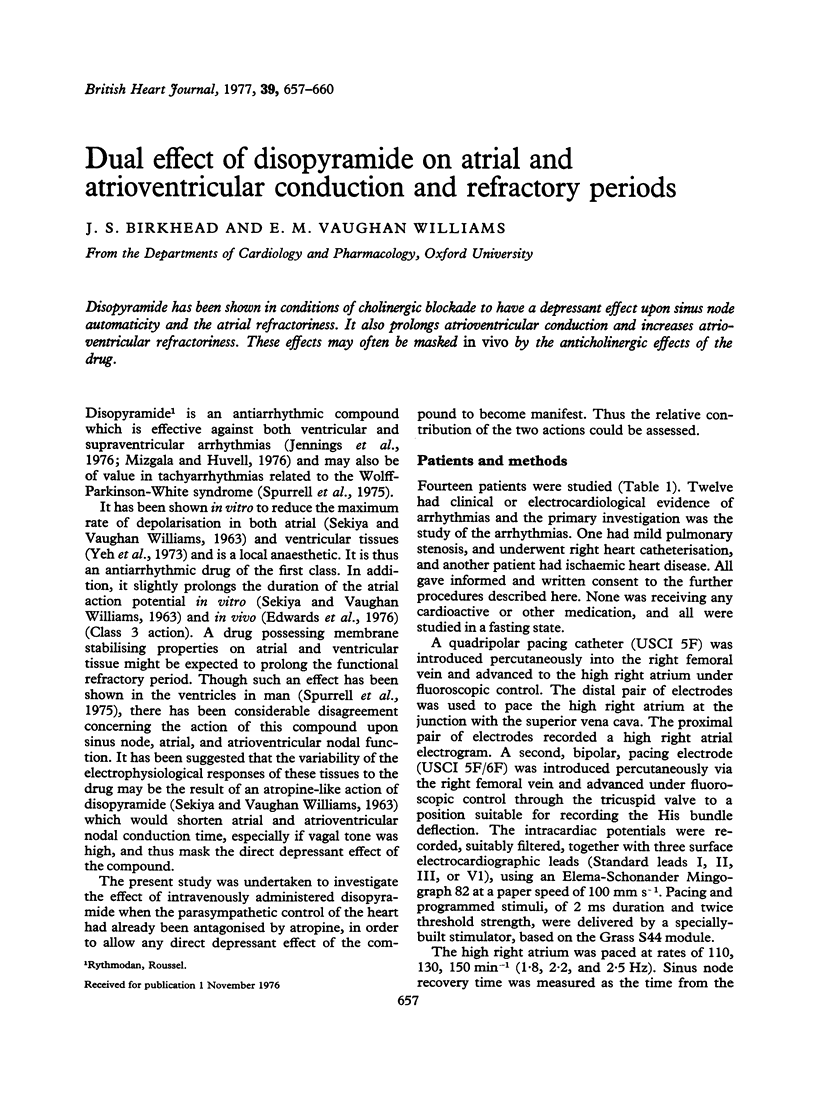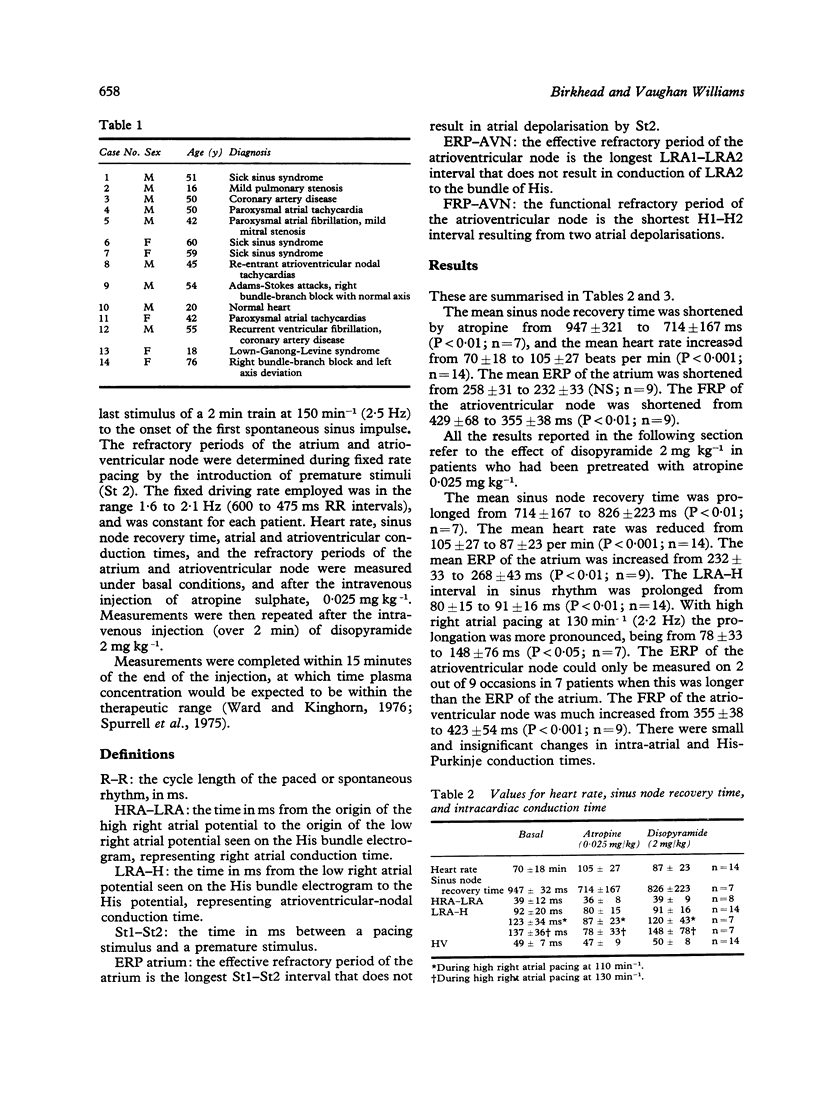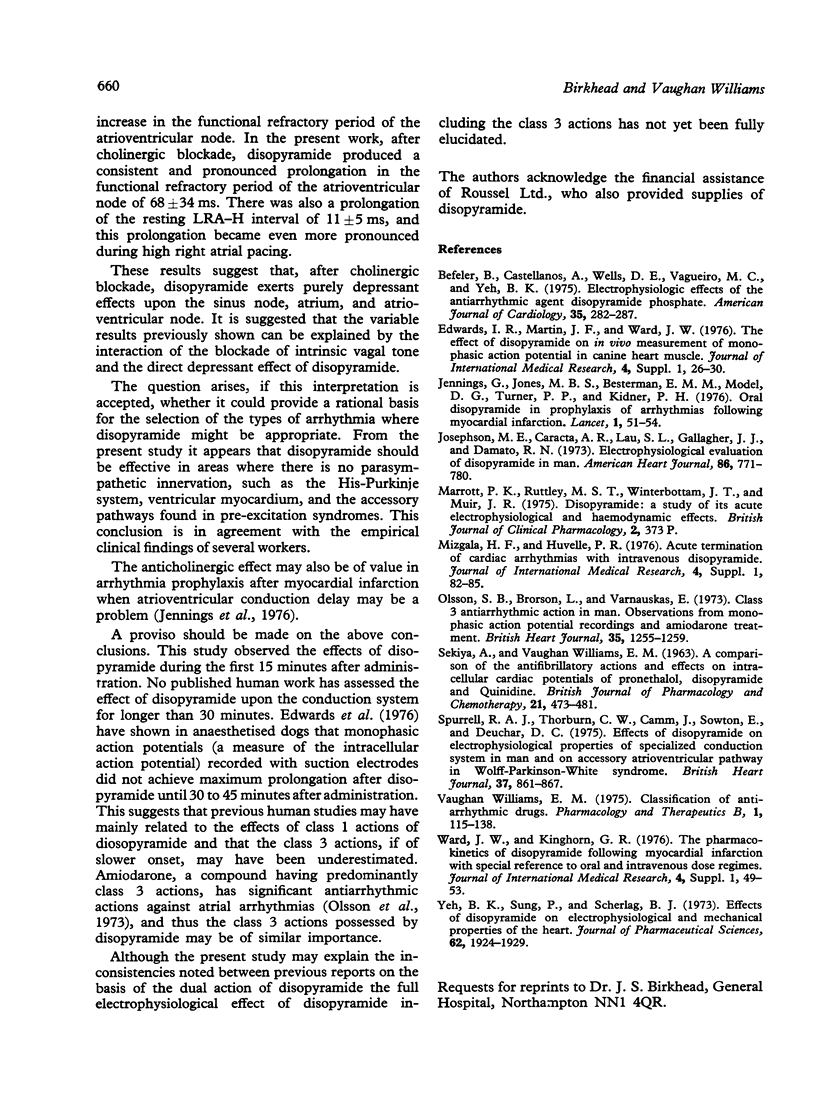Abstract
Disopyramide has been shown in conditions of cholinergic blockade to have a depressant effect upon sinus node automaticity and the atrial refractoriness. It also prolongs atrioventricular conduction and increases atrioventricular refractoriness. These effects may often be masked in vivo by the anticholinergic effects of the drug.
Full text
PDF



Selected References
These references are in PubMed. This may not be the complete list of references from this article.
- Befeler B., Castellanos A., Jr, Wells D. E., Vagueiro M. C., Yeh B. K. Electrophysiologic effects of the antiarrhythmic agent disopyramide phosphate. Am J Cardiol. 1975 Feb;35(2):282–287. doi: 10.1016/0002-9149(75)90014-4. [DOI] [PubMed] [Google Scholar]
- Edwards I. R., Martin J. F., Ward J. W. The effect of disopyramide on in vivo measurement of monophasic action potential in canine heart muscle. J Int Med Res. 1976;4(1 Suppl):26–30. [PubMed] [Google Scholar]
- Jennings G., Jones M. S., Besterman E. M., Model D. G., Turner P. P., Kidner P. H. Oral disopyramide in prophylaxis of arrhythmias following myocardial infarction. Lancet. 1976 Jan 10;1(7950):51–54. doi: 10.1016/s0140-6736(76)90148-3. [DOI] [PubMed] [Google Scholar]
- Josephson M. E., Caracta A. R., Lau S. H., Gallagher J. J., Damato A. N. Electrophysiological evaluation of disopyramide in man. Am Heart J. 1973 Dec;86(6):771–780. doi: 10.1016/0002-8703(73)90280-9. [DOI] [PubMed] [Google Scholar]
- Mizgala H. F., Huvelle P. R. Acute termination of cardiac arrhythmias with intravenous disopyramide. J Int Med Res. 1976;4(1 Suppl):82–85. [PubMed] [Google Scholar]
- Olsson S. B., Brorson L., Varnauskas E. Class 3 antiarrhythmic action in man. Observations from monophasic action potential recordings and amiodarone treatment. Br Heart J. 1973 Dec;35(12):1255–1259. doi: 10.1136/hrt.35.12.1255. [DOI] [PMC free article] [PubMed] [Google Scholar]
- SEKIYA A., VAUGHANWILLIAMS E. M. A COMPARISON OF THE ANTIFIBRILLATORY ACTIONS AND EFFECTS ON INTRACELLULAR CARDIAC POTENTIALS OF PRONETHALOL, DISOPYRAMIDE AND QUINIDINE. Br J Pharmacol Chemother. 1963 Dec;21:473–481. doi: 10.1111/j.1476-5381.1963.tb02015.x. [DOI] [PMC free article] [PubMed] [Google Scholar]
- Spurrell R. A., Thorburn C. W., Camm J., Sowton E., Deuchar D. C. Effects of disopyramide on electrophysiological properties of specialized conduction system in man and on accessory atrioventricular pathway in Wolff-Parkinson-White syndrome. Br Heart J. 1975 Aug;37(8):861–867. doi: 10.1136/hrt.37.8.861. [DOI] [PMC free article] [PubMed] [Google Scholar]
- Vaughan Williams E. M. Classification of antidysrhythmic drugs. Pharmacol Ther B. 1975;1(1):115–138. doi: 10.1016/0306-039x(75)90019-7. [DOI] [PubMed] [Google Scholar]
- Ward J. W., Kinghorn G. R. The pharmacokinetics of disopyramide following myocardial infarction with special reference to oral and intravenous dose regimens. J Int Med Res. 1976;4(1 Suppl):49–53. [PubMed] [Google Scholar]
- Yeh B. K., Sung P. K., Scherlag B. J. Effects of disopyramide on electrophysiological and mechanical properties of the heart. J Pharm Sci. 1973 Dec;62(12):1924–1929. doi: 10.1002/jps.2600621203. [DOI] [PubMed] [Google Scholar]


